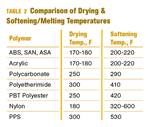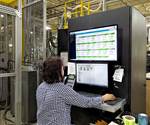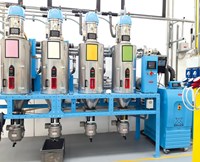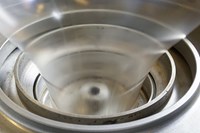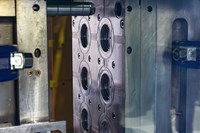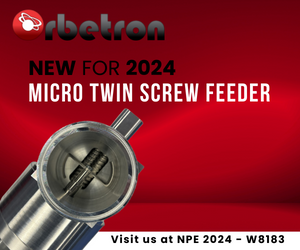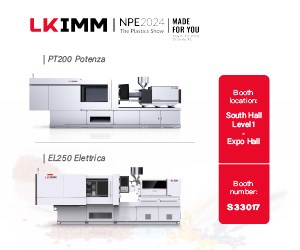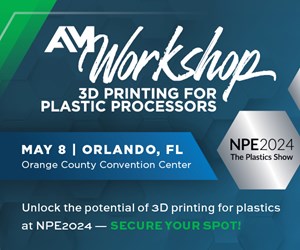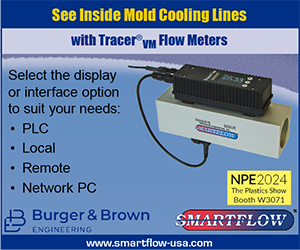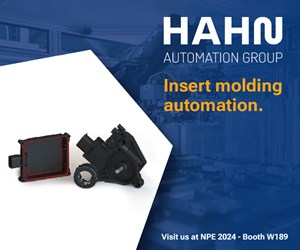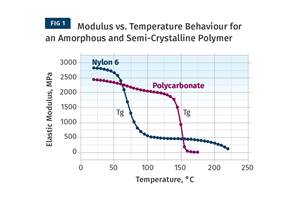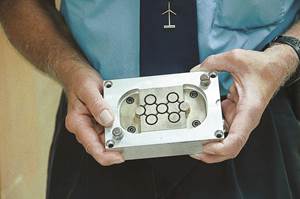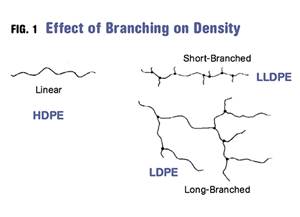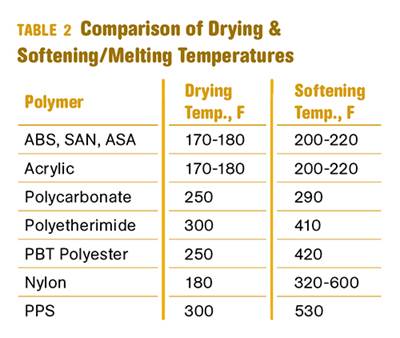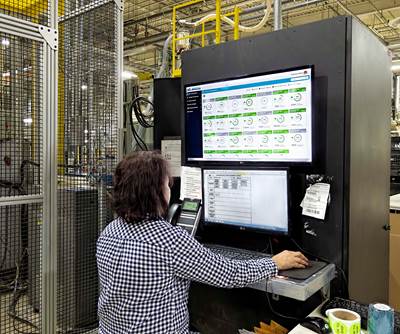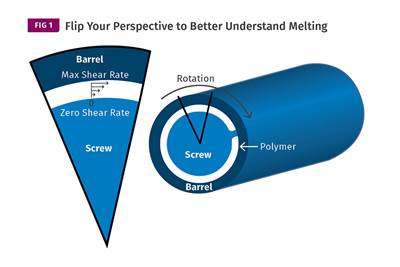EXTRUSION: How Slow Can You Go?
Larger screws designed for high outputs will generate a variety of problems if run too slowly. Here’s why.
Extrusion screws primarily plasticate or melt polymers by introducing energy into the material by shearing it. This shear or “viscous dissipation” is essentially achieved by “stretching” the polymer. In an extruder, of course, a screw rotates in a stationary barrel, and the polymer is assumed to stick to the barrel and to the screw, or to polymer that rotates with the screw. This stretching or shearing is a conversion of mechanical energy to heat by the drive rotating the screw in a viscous liquid.
It’s probably a lot easier to understand this principle if the flights were removed from the screw. Picture a solid cylinder turning inside a hollow cylinder filled with a viscous liquid. Imagine rotating the inner cylinder using a hand crank, with the stationary cylinder filled with a very stiff grease. It’s going to take a lot of work from you to rotate that crank, and that work will be transferred to the grease and converted to heat. If you can rotate the shaft fast enough and long enough the grease will get hot. The thinner the layer of grease between the two cylinders, the higher the shear stress in the grease and the faster the grease will get hot.
An extrusion screw works on that same principle. In an extruder, screw flights added to the inner cylinder allow for transport of material through the cylinder while generating pressure and improving melting. This is what distinguishes an extruder from a churn.
At very low speeds, the screw is limited in the amount of energy it can introduce into the polymer, just as you would use less energy to turn the crank at lower speeds. With less energy introduced, it makes sense to have a very shallow screw so it takes less time to heat it up. If the screw channels are shallow enough, it’s possible to melt the polymer largely using viscous dissipation even at very slow speeds.
Viscous dissipation is much more effective at melting polymers than conducted heat because polymers have poor thermal conductivity. Heating by viscous dissipation is proportional to rotational speed; so as speed is reduced, the melt-film layer adjacent the barrel wall formed during melting is reduced in thickness. This lengthens the distance required for complete melting in the compression section (conventional or barrier section); and once the solids leave the compression section, the shear stress is so low at low speeds that little further shear melting occurs.
Depending on conducted heat from the barrel is very limiting at that point because of the poor thermal conductivity or insulating properties of polymers. Conductive heating is particularly ineffective for crystalline polymers; a substantial temperature differential between the unmelt and the surrounding melt is necessary to supply the “bump” of energy to overcome the heat of fusion. Using very shallow sections allows for more effective viscous dissipation and requires shorter distances for more conducted heat to travel from the barrel. This combination of heating mechanisms may allow for very slow screw speeds.
The problem really comes to light when larger screws designed for much greater outputs are run at low speeds. The channels on these screws have too much depth to allow for sufficient melting by viscous dissipation at low speeds, making them dependent on conductive heating. This results in poor melt quality, unstable output, and large temperature differentials in the extrudate. The larger the extruder, the more problematic this becomes.
Each extruder screw has a range of operating speeds, depending on its design. If run too slowly, they will not provide adequate energy transfer for melting. Single screws are not universally designed to provide the desired melting capacity at all rotational speeds. In the medical field, in particular, there are expanding applications for exceptionally small profile extrusions. Generally speaking, you simply cannot produce parts with tiny dimensions by running larger extruders at very low speeds.
In some instances, a new screw design with shallower channels can help. Other quick fixes include extending the barrel and screw L/D, or preheating the polymer to reduce the amount of heating required by viscous dissipation and/or conduction. But most of the time you’ll be better off with a smaller screw.
ABOUT THE AUTHOR
Jim Frankland is a mechanical engineer who has been involved in all types of extrusion processing for more than 40 years. He is now president of Frankland Plastics Consulting, LLC. Contact jim.frankland@comcast.net or (724) 651-9196.
Related Content
The Effects of Temperature
The polymers we work with follow the same principles as the body: the hotter the environment becomes, the less performance we can expect.
Read MoreHow to Get Rid of Bubbles in Injection Molding
First find out if they are the result of trapped gas or a vacuum void. Then follow these steps to get rid of them.
Read MoreHow to Select the Right Tool Steel for Mold Cavities
With cavity steel or alloy selection there are many variables that can dictate the best option.
Read MoreDensity & Molecular Weight in Polyethylene
This so-called 'commodity' material is actually quite complex, making selecting the right type a challenge.
Read MoreRead Next
Why (and What) You Need to Dry
Other than polyolefins, almost every other polymer exhibits some level of polarity and therefore can absorb a certain amount of moisture from the atmosphere. Here’s a look at some of these materials, and what needs to be done to dry them.
Read MorePeople 4.0 – How to Get Buy-In from Your Staff for Industry 4.0 Systems
Implementing a production monitoring system as the foundation of a ‘smart factory’ is about integrating people with new technology as much as it is about integrating machines and computers. Here are tips from a company that has gone through the process.
Read MoreUnderstanding Melting in Single-Screw Extruders
You can better visualize the melting process by “flipping” the observation point so that the barrel appears to be turning clockwise around a stationary screw.
Read More
.jpg;width=70;height=70;mode=crop)
